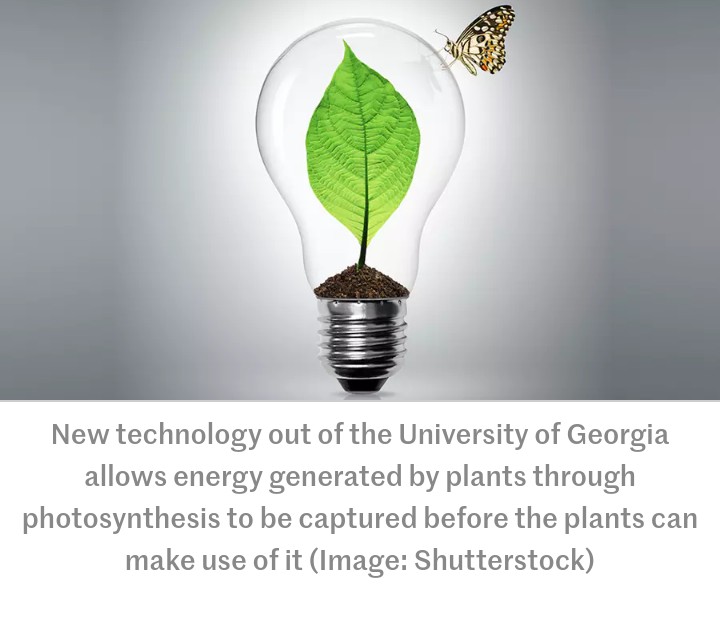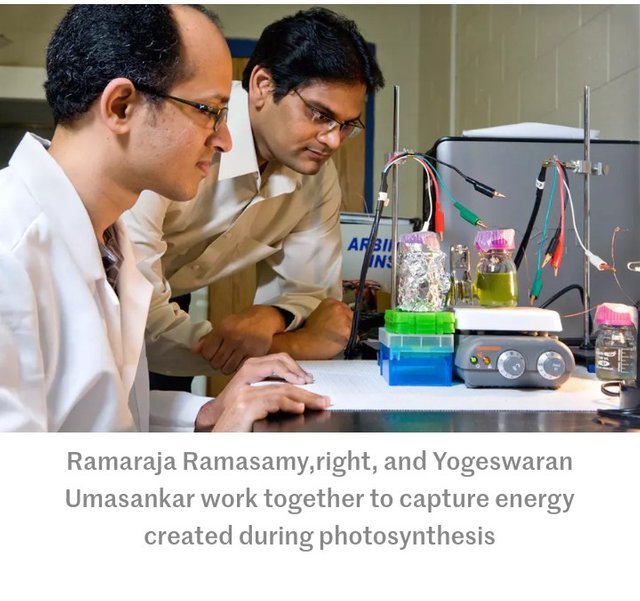Plants: A Source of clean energy?

Living as a start-up entrepreneur in the 21st century Lagos has enlightened me on how huge a challenge lack of constant power supply is; especially to small businesses. In a bid to solve this common problem, I started to surf the web for alternative sources of clean energy.
It was surprising that in advanced countries, a lot of research is constantly done for alternate sources of energy. The most amazing part was that I was able to discover a few articles stating and describing how plants can be used to generate enough energy to run low-powered electrical devices.
Ramaraja Ramasamy; an assistant professor at a prominent college of engineering in the U.S.A, The University of Georgia currently leads a team of researchers that have designed the technology of trapping energy from green plants.
During the photolysis (splitting into its constituent atoms in the presence of light) of water molecules, electrons are generated. This energy is given off; which is usually utilized by the plant in the production of sugar, is intercepted using this technology before the plant can use it to fuel its growth or reproduction.
This technology works by manipulating proteins called thylakoids. These are cells of the chloroplasts controls the flow of the energy.
Mostly, these thylakoids are disabled and an electrical conductor in form of nanotubes is used to capture the electrons and transmit it via the wire.
Small-scaled as these experiments might seem, it has been reported to yield a current density that is of a higher magnitude than the ones generated in previous reports from similar systems. Though it might not be able to power large devices, it can be used to powerless energy-intensive gadgets like remote sensors and portable electronic devices.
It is reported likely to become competitive with other energy sources in future if genetic engineering is leveraged on.
Another article I stumbled on reported on how energy can be generated from plant waste matter. This is said to be suitable for wet areas like rice paddies and mangrove swamps.
In this system, electrons which are released when bacteria break down organic matter excreted by plants; are harvested. This is done using inert electrodes and subsequently converted into electricity.
It is reported to be capable of powering outdoor lighting, Wi-Fi and mobile charging. There is also the possibility of it being incorporated into green roofs to power buildings.
Challenges like the limited amount of electricity being generated plagues this system. However, the use of a tubular system to generate energy from wet areas like peatland, rice paddies, mangrove swamps and deltas can be the solution to this.
In this tubular system, electrodes are buried about 5-30 cm deep in the soil to enable them to be in close proximity to the plant root system. Consideration has to be given to variations in oxygen levels as well.
One of the best qualities of this system is that the bulk of the cost is from installation and does not require constant payment, except for maintenance.
Researchers like these continue to give people around the world; especially in developing countries that lack constant electricity, the hope that might be other solutions to their energy problems.
With constant research and development, I wonder about the possibility of running my business with energy from a tree.

Post of the day! I gave you a vote! Keep posting🤗 thank youu
Appreciated. Thank you
Yes you are right by using natural sources we can produce our needed energy.
Absolutely. It will be great if this alternative energy source becomes available on a massive scale
That is a brilliant development, and one I hope to see more of in the near future, thanks for sharing!
You're welcome.